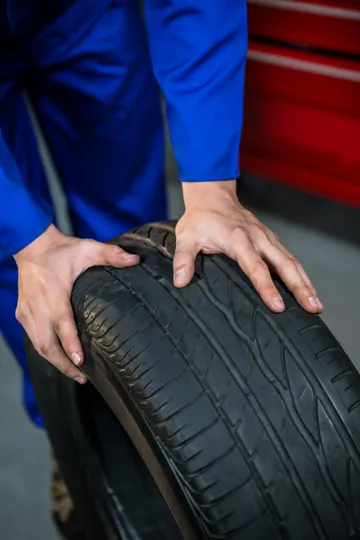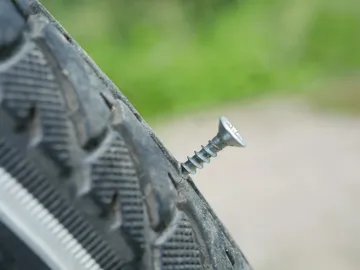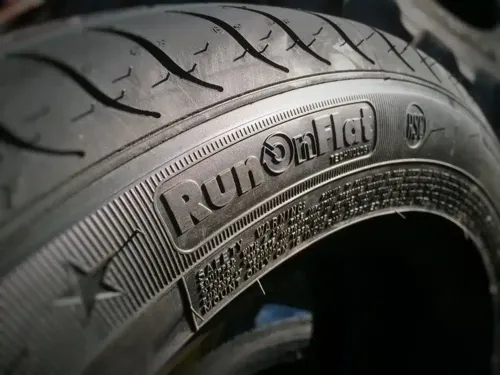Top 10 Signs Your Tyre Needs Replacing
How to spot worn treads, sidewall damage, and other warning signs to ensure safe driving.
Posted on

Your vehicle's tyres are essential to ensure safety, fuel efficiency, and optimal driving performance. Over time, however, tyres experience wear and tear, which can compromise their ability to grip the road and maintain vehicle control. Replacing tyres at the right time is crucial for maintaining safety on the road. Here are the top 10 signs your tyres need replacing:
1. Worn Tread Depth
The most obvious sign that your tyre needs replacing is a worn tread. The tread is the part of the tyre that makes contact with the road, providing grip and traction. As tyres wear down, their ability to perform in wet and dry conditions decreases. The legal minimum tread depth in many countries is 1.6mm, but most experts recommend replacing your tyres when they reach 3mm.
You can check your tread depth by using the penny test or a tread depth gauge. If the grooves are shallow or barely visible, it’s time to replace your tyres.
2. Visible Tread Wear Indicators
Modern tyres come equipped with tread wear indicators, which are small raised bars located within the grooves of the tyre tread. When the tread wears down to the level of these bars, it’s an indication that the tyre has reached its wear limit and should be replaced.
If the tread wear indicators are flush with the tread, it’s a clear sign that your tyres have worn out and need replacing to ensure safe driving, especially in wet or slippery conditions.
3. Cracks or Cuts in the Sidewall
Tyre sidewalls are just as important as the tread. Over time, cracks or cuts can develop in the sidewall due to exposure to harsh weather, UV rays, or general wear. These cracks weaken the tyre’s structure and increase the risk of a blowout.
If you notice visible cracks or cuts on the sidewalls, it's best to have your tyres checked by a professional. In most cases, cracked or damaged sidewalls mean the tyre should be replaced immediately to avoid a potentially dangerous situation.
4. Bulges or Blisters on the Tyre
Bulges or blisters on the tyre's surface indicate that the tyre’s internal structure has been compromised. This can happen due to a sharp impact with a pothole, curb, or debris on the road.
A bulge or blister weakens the tyre, making it more prone to a sudden blowout. If you see any bulges on your tyre, it's crucial to replace it as soon as possible, as driving on a damaged tyre can be extremely dangerous.
5. Damage from Punctures or Nails

If your tyre has been punctured by a nail, sharp object, or other debris, it may be repairable depending on the size and location of the damage. However, punctures located on the sidewall or larger than 6mm in diameter often mean the tyre needs to be replaced.
Driving with a damaged tyre puts you at risk for a blowout or further damage to your vehicle. If you’ve experienced a puncture, it’s important to have a professional assess whether the tyre can be repaired or if it’s time for a replacement.
6. Vibration While Driving
While some vibration is normal when driving, especially on rough roads, excessive or unusual vibration could indicate tyre problems. If you feel a constant shaking or vibrating while driving on smooth roads, it could mean that your tyres are unbalanced, misaligned, or damaged.
In some cases, it may also point to internal damage in the tyre, such as a separated belt. If you experience persistent vibration while driving, have your tyres inspected and replaced if necessary.
7. Uneven Tread Wear
Tyre wear should be even across the entire surface of the tyre. If you notice that one part of the tyre is wearing down faster than another, this is a sign of uneven tread wear. This can be caused by improper wheel alignment, unbalanced tyres, or issues with your vehicle’s suspension.
Uneven tread wear not only affects your vehicle’s handling but also indicates that the tyres are not performing as they should. If the wear is severe, it may be time to replace the tyres and address any underlying mechanical issues.
8. Tyres Are Over 5 Years Old
Even if your tyres appear to be in good condition, they may still need replacing due to age. Tyres naturally degrade over time, even if they aren’t used frequently. The rubber compounds in tyres break down over the years, reducing their performance and safety.
Most tyre manufacturers recommend replacing tyres every 5 to 10 years, depending on usage. To determine your tyre’s age, check the DOT (Department of Transportation) code on the sidewall. The last four digits represent the week and year the tyre was manufactured. For example, a code ending in "2519" means the tyre was made in the 25th week of 2019.
9. Frequent Air Pressure Loss
If you find yourself constantly refilling your tyres with air, it could be a sign of a slow leak or puncture. Tyres that are losing air more frequently than normal may have small punctures, cracks, or faulty valves.
While some slow leaks can be repaired, others may indicate that the tyre is nearing the end of its lifespan. If your tyre keeps losing air, have it inspected by a professional to determine if a replacement is needed.
10. Reduced Performance in Wet Conditions
Tyres with sufficient tread depth are essential for maintaining traction in wet conditions. If you notice that your car is slipping, skidding, or hydroplaning more frequently during rain, it could be a sign that your tyres are worn out and no longer able to provide adequate grip.
A lack of traction can be dangerous, particularly in wet weather, as it reduces your ability to control your vehicle. If your tyres are not performing well in wet conditions, it's a strong indicator that they need to be replaced.
Conclusion
Regularly inspecting your tyres and knowing the signs of wear and damage can help you determine when it's time for a replacement. Worn-out or damaged tyres not only affect your vehicle's performance but also put you at risk of accidents and breakdowns. By staying vigilant and replacing your tyres when necessary, you can ensure a safer, smoother, and more efficient driving experience.
If you've noticed any of these signs on your tyres, it's time to consult a professional and consider replacing them. Staying proactive with tyre maintenance is key to keeping you and your vehicle safe on the road.









